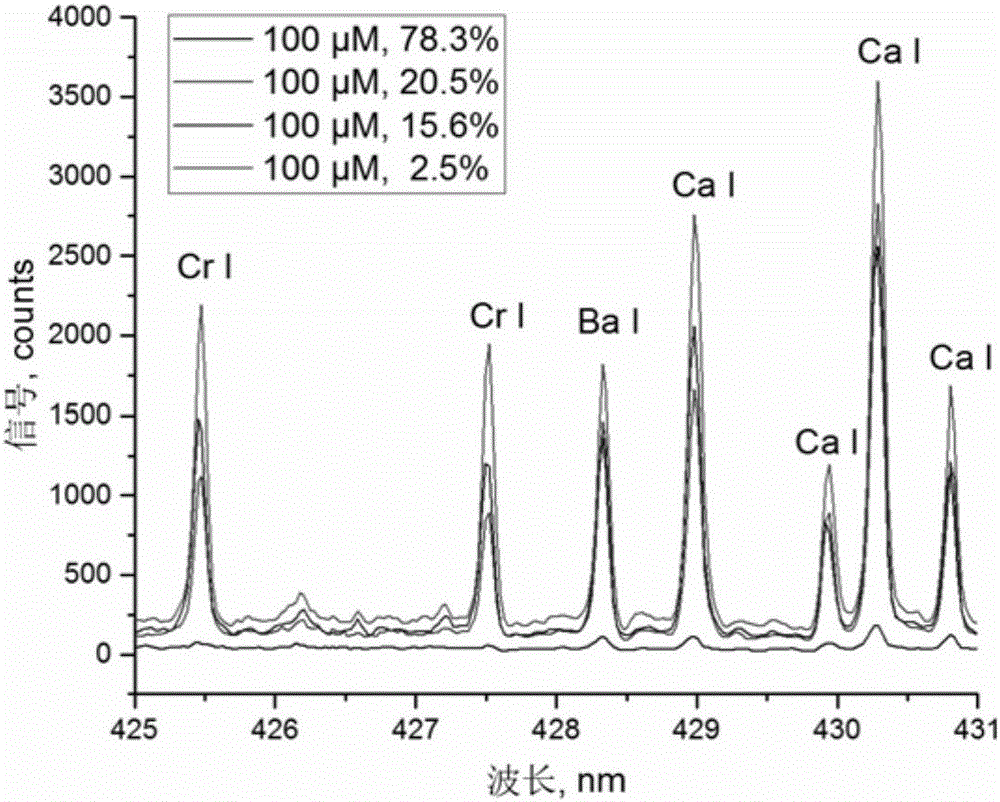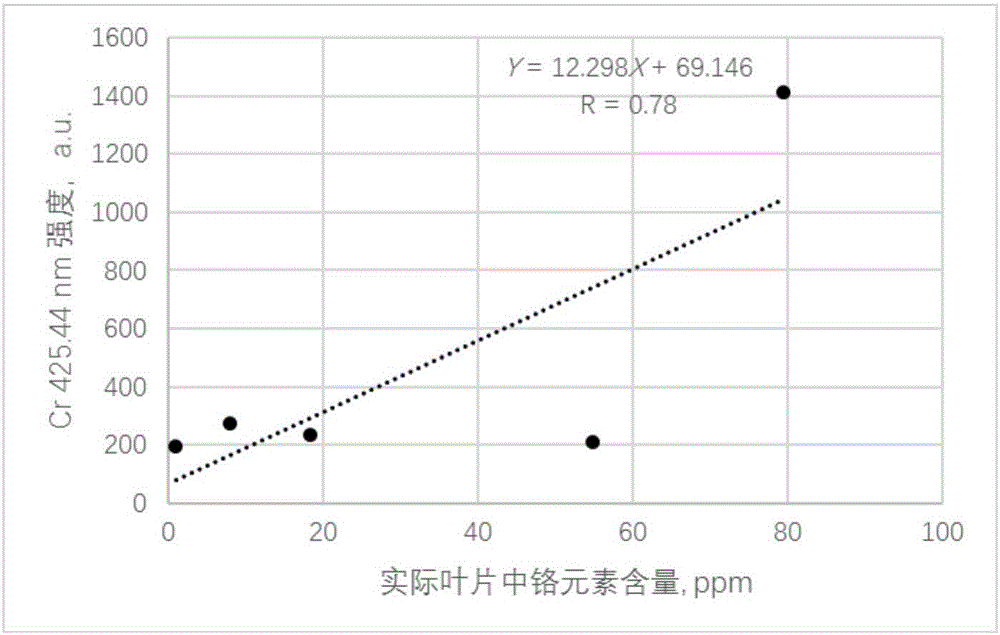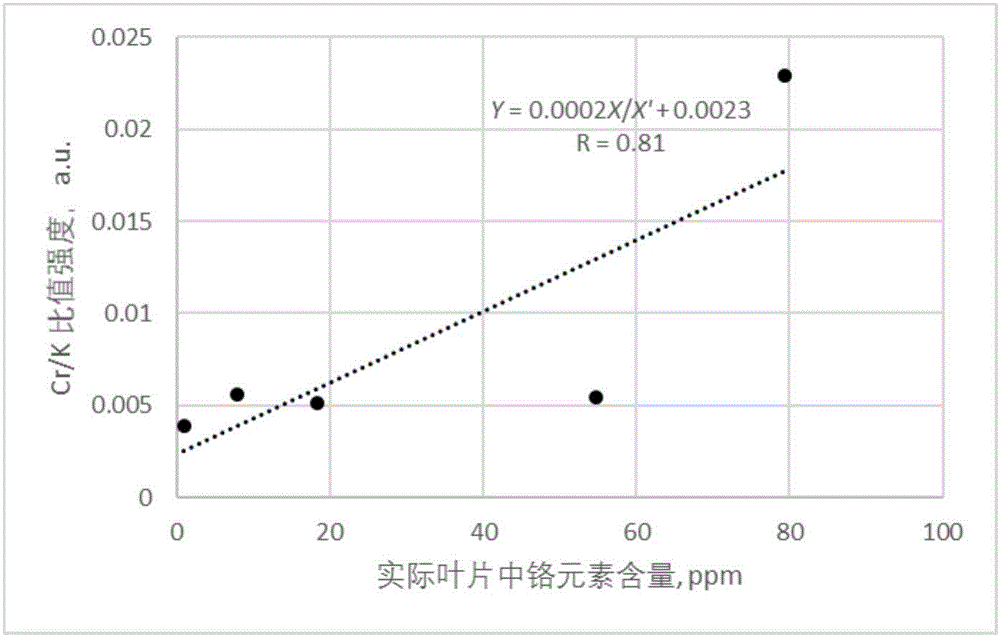K-element ratio based water content calibrating type heavy metal content detecting method for leaves
A detection method and ratio correction technology, which is applied in the field of laser spectroscopy, can solve the problems of rapid detection of laser-induced breakdown spectrum, increase of detection and analysis time, etc., and achieve the effect of overcoming long detection time, fast detection and ensuring reliability
- Summary
- Abstract
- Description
- Claims
- Application Information
AI Technical Summary
Problems solved by technology
Method used
Image
Examples
Embodiment Construction
[0039] The present invention will be described in detail below in conjunction with specific embodiment and accompanying drawing, and the concrete steps of detecting Cr element content in rice are as follows:
[0040] 1. The experimental rice variety is Chunyou 84, which is a single-season indica-japonica hybrid rice widely planted in Zhejiang Province. After the rice seeds were sterilized by NaClO solution for 30 min, they were washed several times with tap water and distilled water respectively, soaked in the dark at 25°C for 2 days, and then placed at 35°C for 1 day to accelerate germination. The germinated rice seeds were sown in containers containing perlite and cultured in an artificial climate growth chamber. The hydroponic conditions of rice are: photoperiod 14h / 10h; temperature 30℃ / 22℃; light intensity 225μmol m -2 the s -1 ; Relative humidity 85%. After the rice was cultured in distilled water for 15 days, it was cultured in nutrient solution. Five Cr levels were ...
PUM
 Login to View More
Login to View More Abstract
Description
Claims
Application Information
 Login to View More
Login to View More - R&D
- Intellectual Property
- Life Sciences
- Materials
- Tech Scout
- Unparalleled Data Quality
- Higher Quality Content
- 60% Fewer Hallucinations
Browse by: Latest US Patents, China's latest patents, Technical Efficacy Thesaurus, Application Domain, Technology Topic, Popular Technical Reports.
© 2025 PatSnap. All rights reserved.Legal|Privacy policy|Modern Slavery Act Transparency Statement|Sitemap|About US| Contact US: help@patsnap.com



